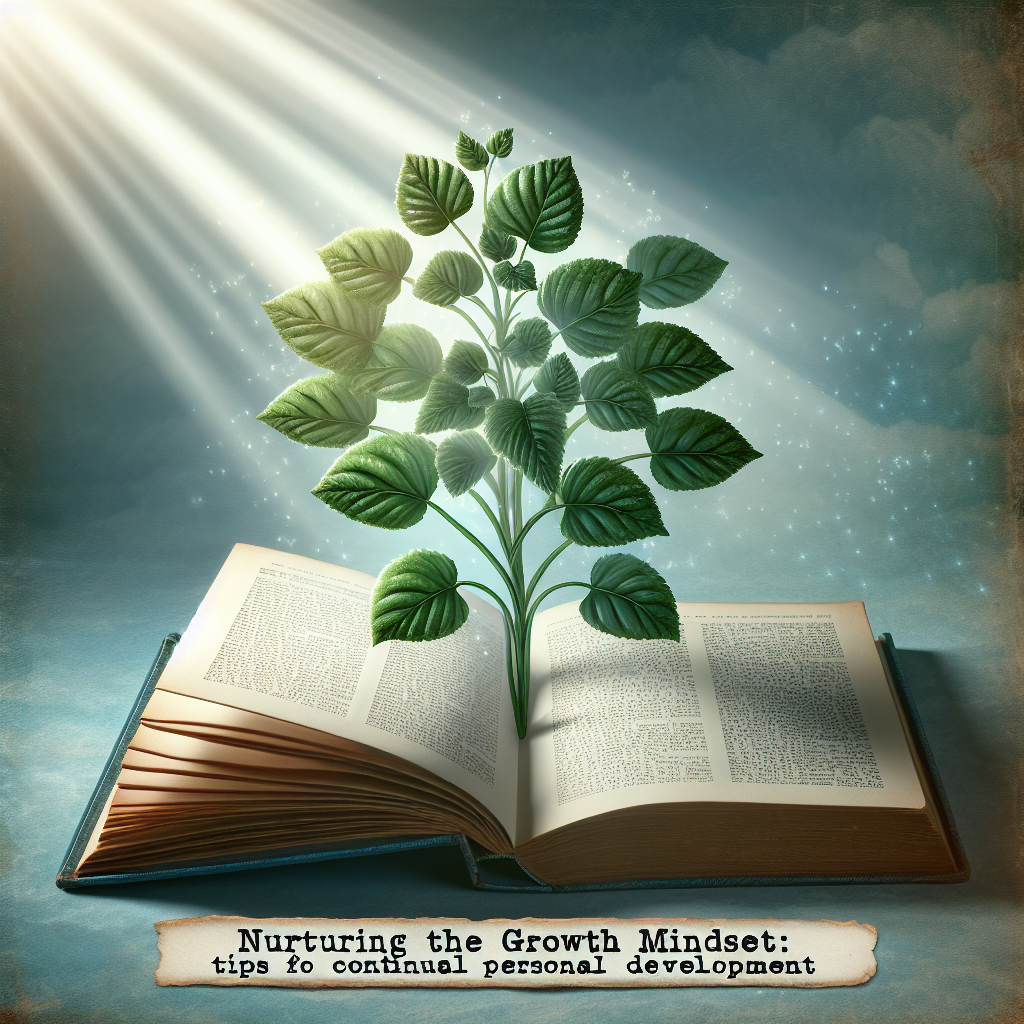
Nurturing the Growth Mindset: Essential Tips for Continuous Personal Development
Introduction
In a world that constantly demands adaptability and resilience, fostering a growth mindset is more crucial than ever. “Nurturing the Growth Mindset: Tips for Continuous Personal Development” is not just a catchy phrase; it represents a transformative approach toward lifelong learning and self-improvement. Whether you’re a student, a professional, or someone simply seeking personal growth, the concept of a growth mindset can change how you perceive challenges and failures. The best part? It can be cultivated and nurtured!
So, how do you embark on this journey? This comprehensive guide will unveil proven strategies, practical tips, and real-world case studies that illustrate how nurturing this mindset can lead to a fulfilling and rewarding life.
Understanding Growth Mindset
What is Growth Mindset?
Coined by psychologist Carol Dweck, a growth mindset is the belief that abilities and intelligence can be developed through dedication and hard work. It contrasts with a fixed mindset, where individuals believe their abilities are static and unchangeable.
| Growth Mindset | Fixed Mindset |
|---|---|
| Embraces challenges | Avoids challenges |
| Sees effort as a path to mastery | Sees effort as fruitless |
| Learns from criticism | Ignores feedback |
| Finds inspiration in the success of others | Feels threatened by others’ success |
The Importance of Nurturing a Growth Mindset
When you actively nurture a growth mindset, you position yourself for success in both personal and professional realms. Research shows that individuals with a growth mindset not only achieve higher levels of accomplishment but also enjoy greater satisfaction in their lives. By equipping yourself with resilience and adaptability, you can meet life’s challenges head-on.
Tips to Nurture Your Growth Mindset
1. Embrace Challenges
Why It Matters: Engaging in challenges allows you to stretch your skills and broaden your horizons.
How to Do It:
- Start small. Tackle minor challenges to build your confidence.
- Set long-term goals that push your limits.
Case Study: J.K. Rowling, author of the Harry Potter series, faced numerous rejections before achieving success. Rather than retreating from these challenges, she embraced them, demonstrating the power of resilience in nurturing a growth mindset.
2. Cultivate Curiosity
Why It Matters: A curious mind drives you to explore new concepts and ideas, expanding your understanding.
How to Do It:
- Allocate time to learn something new each week.
- Attend workshops or take online courses relevant to your interests.
Case Study: Elon Musk, known for his inquisitive nature, often dives deep into unfamiliar subjects. His curiosity has led him to revolutionize industries, showcasing how continuous learning fuels innovation.
3. Redefine Failure
Why It Matters: Viewing failure as a stepping stone rather than a setback allows for constructive learning.
How to Do It:
- Reflect on past failures and extract lessons from them.
- Share your experiences with others to normalize setbacks as part of the growth process.
Case Study: Thomas Edison famously said, “I have not failed. I’ve just found 10,000 ways that won’t work.” This perspective on failure played a pivotal role in his countless inventions, highlighting the significance of nurturing a growth mindset.
4. Seek Feedback
Why It Matters: Constructive criticism is a gift that can drive improvement and deeper understanding.
How to Do It:
- Request feedback from trusted colleagues, mentors, or even friends.
- Approach feedback with an open mind and a willingness to adapt.
Case Study: Bill Gates actively seeks feedback on his work to continuously improve. He believes that embracing critiques has significantly contributed to his success, emphasizing the importance of nurturing the growth mindset through external insights.
5. Celebrate Others’ Success
Why It Matters: Recognizing the achievements of others fosters a supportive environment and combats feelings of inadequacy.
How to Do It:
- Attend and participate in networking events.
- Engage in conversations that celebrate collective achievements rather than individual competition.
Case Study: In the tech industry, collaborations often lead to greater innovations than solitary efforts. This camaraderie among tech leaders, like those in Silicon Valley, reinforces the notion that nurturing a growth mindset benefits from shared successes.
6. Practice Mindfulness
Why It Matters: Mindfulness can help you become more aware of your thoughts and feelings, making it easier to challenge negative thinking patterns.
How to Do It:
- Incorporate meditation or deep-breathing exercises into your daily routine.
- Journal regularly to reflect on your mindset and emotional state.
7. Develop a Learning Routine
Why It Matters: Regular learning helps engrain the idea that growth is a continuous process.
How to Do It:
- Schedule dedicated learning hours each week.
- Explore various formats: books, podcasts, MOOCs, or even documentaries.
Case Study: Warren Buffet, one of the most successful investors, spends 80% of his day reading. His commitment to continuous learning is a testament to the effectiveness of nurturing the growth mindset.
Tables and Charts: Visualizing Growth Mindset Strategies
| Strategy | Benefit | Example Activity |
|---|---|---|
| Embracing Challenges | Increased resilience | Volunteering for new projects |
| Cultivating Curiosity | Broadened perspectives | Exploring a new hobby |
| Redefining Failure | Enhanced learning | Reflective journaling after setbacks |
| Seeking Feedback | Improved performance | Regular check-ins with mentors |
| Celebrating Success | Community support | Recognizing peers in meetings |
Conclusion
Nurturing the growth mindset is an ongoing journey that demands persistence and dedication. By emulating the habits and practices outlined in this article, including embracing challenges, cultivating curiosity, and redefining failure, you can position yourself for success and fulfillment in all areas of life.
The essence of “Nurturing the Growth Mindset: Tips for Continuous Personal Development” lies in your willingness to adapt, learn, and grow. Remember, growth is not a destination but a way of life. Embrace it!
FAQs
1. What is the first step in developing a growth mindset?
Start by acknowledging and challenging your fixed mindset beliefs. Reflect on personal experiences where you may have avoided challenges due to fear of failure.
2. Can anyone develop a growth mindset?
Absolutely! Anyone can develop a growth mindset with consistent effort and practice. It requires self-awareness and the willingness to embrace new challenges.
3. How do I know if I have a fixed mindset?
Signs of a fixed mindset include avoiding challenges, feeling threatened by others’ success, and viewing effort as fruitless. Self-reflection and feedback can help identify these patterns.
4. How can I help others develop a growth mindset?
Encourage them by celebrating small wins, providing constructive feedback, and sharing your own experiences with challenges and learning.
5. Is it possible to have both a fixed and a growth mindset?
Yes, many individuals experience a blend of both mindsets depending on the context. It’s essential to identify areas for improvement and actively work towards cultivating a growth mindset.
By nurturing the growth mindset, we not only transform our approach to personal development but also inspire those around us to embark on their journeys of continuous growth. Remember, the key is consistency—commit to it, and the possibilities are endless!












